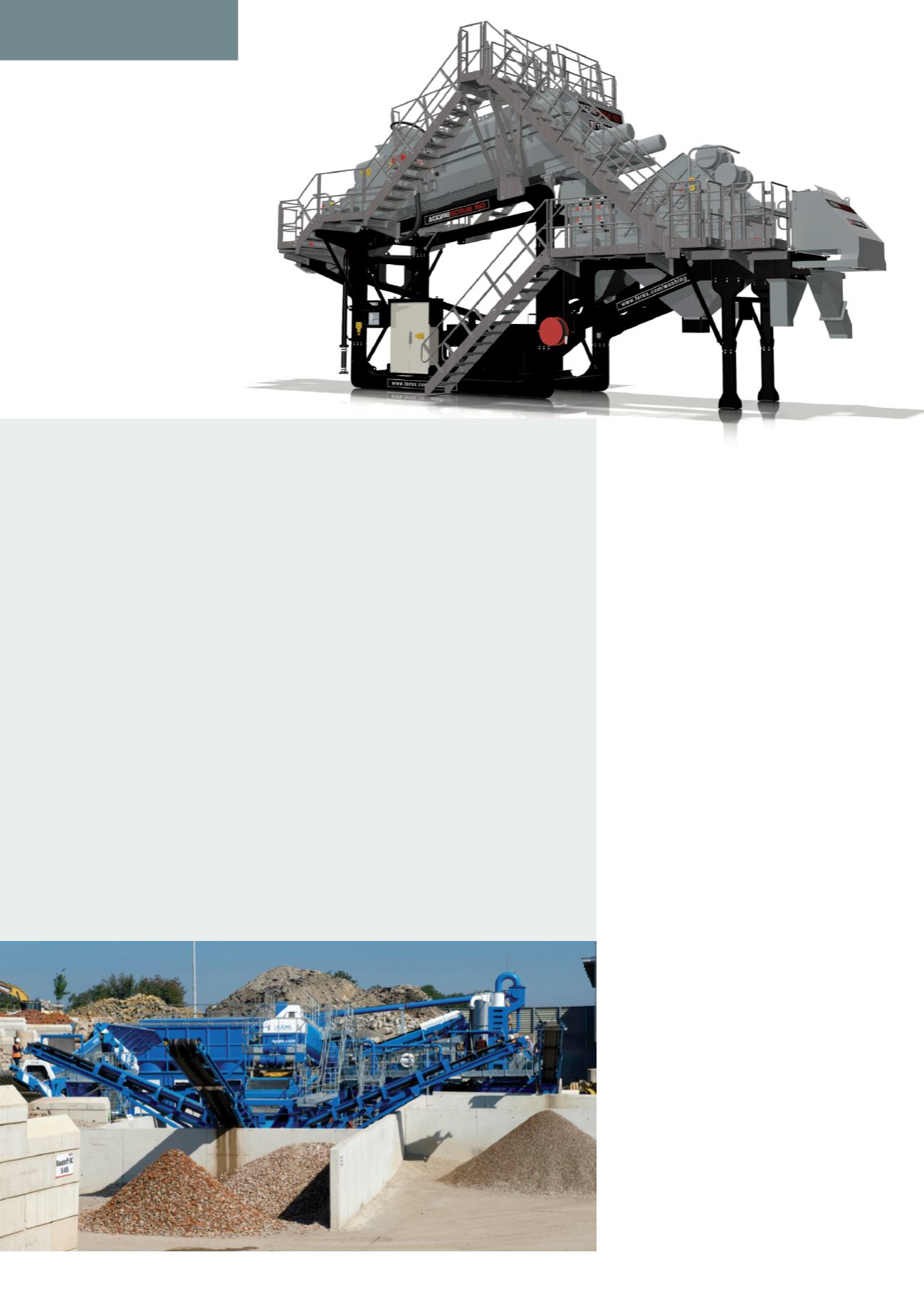
34
MAY-JUNE 2015
d
&
ri
CDE’s PeterCraven alsodoes not believe
thatwash systems are too large for use in
recycling.He said: “wehaveprovided systems
for 20 tonneper hour right up to300 tonne
per hour systems dependingon the individual
requirements of theproject. The smaller
capacities tend tobemore focusedon road
sweepings recycling.On thewaste recycling
sidewehave installed a 60 tonnes per hour
recyclingplant inStuttgart and another 300
tonnes per hour plant inScandinavia in
recentmonths, so all of theprocesseswithin
the system canbe sized according to the
individual project requirements.”
Peterwent on: “The key to success
withwaste inour experience is tobuild
the equipment for the specificproject
requirements. All of the equipmentwe
provide as part of any recyclingplant is
intended for application in this area. The
process startswithourR-Series primary
screeningunits – there are twomodels
available and these facilitate the feeding
ofwaste to theprocessingplant. The large
hopper capacities reduce the requirement for
adedicatedperson to feed theplant.”
“Material thenmoves to theM2500
Recyclingmodel – it is here thatmetals
are initially removed and aggregates are
prepared for delivery to the scrubbingphase
while the -5mmmaterial is sent to the
sandwashing stage. TheAggMaxportable
logwasher subjects thematerial to the
attrition required toproduce clean recycled
aggregateswhile also integrating a three
product sizing screen and a trash screen (for
removal of lightweights, organics andother
contaminants).”
“OurAquaCycle thickener range is then
employed to recycle approximately90%of
thewater back to thewashingplant and the
final sludge treatment stageproduces adry
cake that canbe stockpiled in aproduct bay
EU lends support
to improving waste
recycling capability
A new processing plant for construction, demolition and excavation waste has recently
been installed in Stuttgart, Germany as part of the Eco-Innovation programme from the
European Union. The plant has been installed on the site by CDE Global and includes
a series of product developments aimed at improving the quality of recycled sand and
aggregates produced from CD&E waste.
Supported by the Eco-Innovation Fund from the European Union, this new aggregate
processing system includes a new feed arrangement to the plant, enhancedmobility,
reduced plant footprint, improvedmaintenance access and developments at the sludge
management stage of the process. The project will operate under the acronym of
‘CANDY’, which stands for ‘CompAct, highly mobile, Next generation, CD&E waste
recoverY system’.
Speaking about the project, CDE regional manager for UK& Ireland, Matt Bunting
said “We have pioneered these systems in the UK over the last decade and have proven
the capability for themachines tomove recycled sand and aggregates up the value
chain. Through this partnership project with the EUwe will be able to show that systems
employed extensively in the UKmarket are themost advanced processing systems
available for construction, demolition and excavation waste.”
According toMatt, the CDE washing plants for construction, demolition and excavation
waste currently operational in the UK are divertingmore than fivemillion tonnes of this
material from landfill every year. “The product developments included within this project
will offer significant potential for both our existing customers and other waste processors
to further improve the quality of the recycled sand and aggregate products they are
producing. This will increase the commercial value of thismaterial and deliver amuch
quicker return on investment,” he said.
The installation of a CDE Global washing
plant in Stuttgart, Germany, is one result of
the EU’s Eco-Innovation programme
equipment does is carryout sizing, scrubbing
and recovery. The scrubbingprocess, by
happy coincidence, is very good at removing
lightweightmaterials (plastics, paper
etc.).Wehave theAggrescrub150 and
Aggwash (for smaller capacities) that
in addition toproduct cleaning, carry
out product segregation.With awash
system, sand and fine grit that often
makeup a sizeablepercentage of the
original feed are also separatedout
by theprocess toprovide yet another
sellableproduct.”
Iainbelieves the economics of installing
such a system certainlymakes sense.He said:
“evenwith ahigh capital system, Iwould
expect theplant topay for itself
within12months and18
wouldbe theupper end.”
AGGREGATE
WASHING
TerexWash Systems’ Aggrescrub 150, with a
maximum throughput of 150 tonnes per hour is
ideal for demolitionwaste recycling applications. It
features improvedwear characteristics, reduced
costs and the ability to scrub aggregate and float out
clays, silts, wood and plastic on a single chassis


